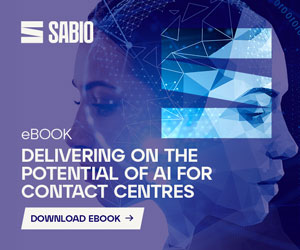What will the call centre look like in ten years’ time? Ten years can see great technological advances, and call centres have changed a lot since 2000. Back then, social media didn’t exist on the level it does now, and Facebook hadn’t even been invented. So what changes might happen in the next ten years?
Call Centre Helper asked a panel of experts for their thoughts.
Virtualisation
By 2020, the call centre as we currently know it may not exist. Agents will instead work remotely, from home, or community-based ‘hub’ buildings. As high-speed wireless internet connections become the norm, there is less need to have agents grouped together in the same location. Companies will no longer need to invest so much in property and equipment for a call centre. Dr Nicola Millard, BT Customer Experience Futurologist, thinks that by 2020 customer service agents could be working from a variety of locations.
“The experts could be anywhere – the true ‘Martini’ vision of the contact centre – any time, any place, anywhere, through any channel and any device. Many will work from home, many will be on the move, many will work in offices/branches but all will be working to solve customers’ issues,” said Dr Millard.
Of course, this would need to be closely tracked with workflow and CRM systems to ensure that customer issues are properly resolved.
Software as a service will be widespread
Virtualisation will be accompanied by widespread use of hosted software solutions. According to Peter Fernando, Marketing Manager at ASC Telecom, call centres will benefit from the cost-effectiveness and scalability of these systems:

Peter Fernando
“The 2020 contact centre will be able to have solutions for call recording, quality management, speech analytics, CRM and multi-channel tracking, via a fully virtual platform, negating the need for expensive hardware,” said Peter Fernando.
Software of this type, dubbed ‘Software as a Service’ (SaaS), usually follows a pay-as-you-use model. They can be adapted for use in any location, without the need for support from a large IT department.
Environmentally friendly IT provision is expected to become a key issue, and some organisations may virtualise their calls centres to minimise their impact on the environment. These green concerns may also drive the trend towards home-working, as public transport becomes increasingly crowded.
Location-based services
A further development of virtualised call centres could be location-based services. By 2020, a customer calling a helpline could be automatically connected to a customer service operative working remotely within a few miles of their location. The latest smart phones and wireless ‘tablets’ like the iPad feature some location-based services already.
“You could potentially be able to find out which houses are for sale in the neighbourhood you are currently in, assess whether this is a good place to live from tags and comments that people have attached to that location, watch a virtual tour from the estate agent, contact the bank and have a video conference with a mortgage advisor and buy the house all whilst standing outside in the car park,” said Dr Millard.
Customer service agents could even be mobile, and able to meet the customer if necessary. For social or healthcare services, this could prove very useful.
Charges to speak to a human being
Call centres in 2020 may have far less need for human interaction.

Richard Kenny
“Automation won’t be a choice in 2020, it will be the standard. The luxury of a full-time team dedicated to conversations with customers will be something that companies have removed,” said Richard Kenny, Contact Centre Segment Manager at Plantronics.
Automated responses to customer requests will be formulated based on previous purchases and common questions. Advanced systems will personalise these responses.
“Speaking to, or interacting with a dedicated person for service will still exist but it will be a niche activity that companies will charge for,” said Kenny.
Charging to talk to a customer service agent would represent a huge shift in current attitudes. But ten years is a long time, and the beginnings of the shift can perhaps already be seen.
“Ever more demanding and technology-savvy consumers will be completely au fait with how to get to the answers they want – by calling/emailing or using voice/SMS/web self-service options,” said William Gray, Managing Director of Macfarlane.
Intelligent search technology and natural language recognition will save customers the task of sifting through lengthy FAQ pages.
Social customer service
What if customers answered each other’s questions? Companies would save on costly customer service departments. Some organisations already base customer service strategies on customers collaborating with each other, according to BT Futurologist Dr Millard.
“Many organisations will also be using these social and collaborative tools with their customers as a visible, searchable and growing library of questions and resolutions,” said Dr Millard.
In some industry sectors this is already common. Software developers often build large communities of users who share, collaborate and even improve upon the company’s product. In some cases, the best source of technical support is not the ‘official’ customer service operation but the community of users.
Matching customers to agents
One of the key changes in the call centre of the future will be in call routing. Customers will be matched with a suitably skilled agent far more effectively than currently possible. Several technologies will assist this. Richard Kenny of Plantronics believes that organisations will ‘turn themselves inside out’ as Unified Communications technology reaches maturity:
“Publishing your organisation’s entire availability externally will become the norm. No longer will people have to dial 0800 numbers to get through to a contact centre agent in an organisation who may or may not be able to help,” said Kenny.
Voice biometrics
By 2020, voice biometrics software may have become reliable enough to replace security-check questions in call centres. Voice biometrics records a unique imprint of a caller’s voice, based on factors including the size and shape of the mouth, throat, nose and teeth, and the tension of the vocal cords. A voice can be analysed by software very quickly to determine authenticity. Since each voice is unique, voice biometrics software theoretically offers much greater levels of security than check-questioning. By 2020, it may become a standard feature of the call centre.
The enterprise-wide contact centre

Mark King
Call centre agents often consult external experts whilst resolving customer queries. In the future, the boundaries between agent and external technical, legal or financial expert will diminish.
“Operators must bridge the gap between their contact centre and external knowledge workers so every customer-facing employee can access the same contact centre processes and applications,” said Mark King, Senior VP, EMEA, Aspect.
Customer service moves up the agenda
A by-product of increased social media use will be greater prioritisation of customer service across companies. Social recommendation websites often direct large amounts of praise to a few large companies who perform well.
“What used to be a one-to-one customer interaction environment has evolved to a many-to-one, many-to-many and one-to-many communication model,” said Simon Angove, CEO of GMT Corporation.
As many services become automated and virtual, such as paperless billing systems, companies will have to find alternative branding methods. Renewed emphasis will fall on customer service to differentiate between the rest. Companies wanting to become most-recommended will have to up their game. Customer service will become more competitive as businesses seek to use social media recommendations as marketing. By 2020, customer service will be a higher priority than it is now, from boardroom level downwards.
What else will feature in the call centre of 2020? Have your say in our forum.
Author: Jo Robinson
Published On: 17th Nov 2010 - Last modified: 24th Feb 2025
Read more about - Expert Insights, Alvaria, Nicola Millard, Poly, Predictions, Richard Kenny, Simon Angove






































Great article! Some other articles that I have read in the recent past have talked about the use of artificial intelligence in contact center automation. It is going to be really interesting to see what happens.
Brilliant article, I really like the part about Social Customer Service, why shouldn’t customers answer each others queries, these days customers can know as much as the reps on the phone.
Do you think live chat will play a larger or smaller roll in customer service in the future?
Who knows what tomorrow brings …. Good song and oh so true.
Did you pick Betamax over VHS and then have to change to DVD (only to find BluRay and the Internet lurking in the corner)?
Things will change, the only thing for sure is that Contact Centres will be here as, sooner or later, people want an answer and 9 out of 10 times it’s a person who eventually provides that answer, in one way, shape or form.
Thats what makes this business fun!
This article is true, and so disturbing. With the amount of jobs being lost due to automation, the service sector is expected to fill in that jobless void. Problem here is, the more efficient software based solutions and technical support becomes available, the fewer people the company will need to hire. So inevitable, they’re saving money. It’s all about cutting costs, and maximising profit. That will be the cause of the failure in our profit oriented financial system.
IF WE CALL A CALL CENTRE AND WE DO NOT GET A CLEAR ENGLISH SPEAKING PERSON ON THE OTHER END OF THE LINE, LIKE INDIAN OR THOSE TYPES OF ACCENTS, THEN THAT IS A TURN OFF AND NOT GOOD CUSTOMER SERVICE AT ALL.
SOMEONE NEEDS TO INVENT THE TECHNOLOGY THAT WILL CONVERT AN ACCENT INTO CLEAR HUMAN SOUNDING CONSICE & ACCURATE ENGLISH AUDIO.
Most of these technologies exist today and are in place. The hard part is understanding that no two call centers are alike and developing software solutions that work with different based clientele. So often I see these articles that assume the customer is a single person within a company, when in fact there can be multiple people calling from one organization. I’d be interested into seeing a research article about increasing integration efficiency of contact center tools to be flexible with multiple brands of contact centers. Nonetheless, great article, and I liked that the topics were taken from different people.